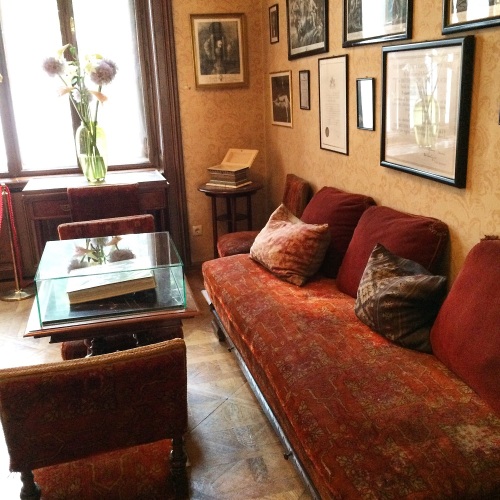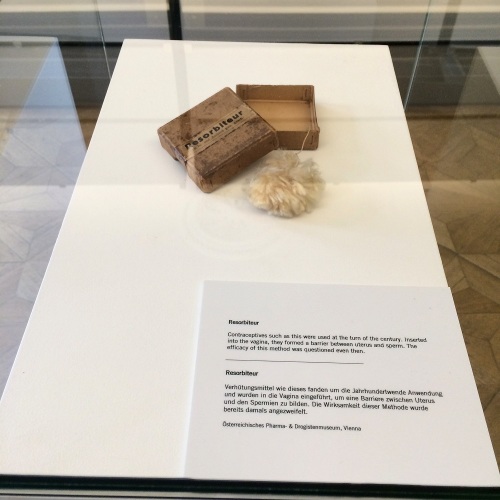I’m back from Budapest! This month will be very busy: first I’ll be attending Readercon, where I’m an author guest. I’ll have a reading, a kaffeeklatsch, and a whole bunch of panels. Then I’ll be teaching at the Stonecoast MFA Program summer residency. While I’m there, I’ll be on a panel about research for writers, which makes perfect sense considering that I just got back from five weeks of doing research in Europe. Well, not all of it was doing research — some of it was sleeping and eating. But otherwise? Yes, pretty much all research.
First I flew to Budapest, where I spent one day in my grandmother’s apartment before heading by train to Vienna. In Vienna, I stayed with wonderful and very generous friends who live within walking distance of the Ringstrasse, which semi-circles the center of the city. Every day I was there, I would set out in the morning and just walk, as long as my legs would carry me. I ended up so tired! But I did all the research I needed to, in order to write the central chapters of the book I’m working on now. Honestly, I don’t think I could have written this book without going to Vienna — I hadn’t been in so long, and Vienna has a completely different character than Budapest, although they are related. It’s like the relationship between the sensible older sister who became an investment banker and the rebellious younger sister who ended up a performing artist — she has a lot less money, but she makes up for it in style and individuality. That’s how I think of Budapest. I really needed to see Vienna, smell Vienna, taste Vienna. I needed to get a sense of her, to internalize her just a little, so I could capture her in my novel.
One of the things I want to say at Stonecoast is that research for writing is completely different from the sort of academic research most of us are taught. I was taught more academic research than most: my PhD dissertation was on late nineteenth-century gothic literature, and as you can imagine, it required a lot of research. Around two years’ worth. When I started to write my first novel, I thought, easy peasy. I’ve done the research for this. Ha! The first time my characters wanted to buy anything and I had to figure out how many shillings were in a pound, I realized my previous research had been a bare beginning. You can write a PhD dissertation about the late nineteenth century not knowing very much about the sewage system, or contagious diseases, or how an oven works. But not a novel! For a novel, you need to know all sorts of things so you can imagine even more, so your characters can walk around in a world that has the texture of reality. You need to know about mourning customs, and when indoor plumbing was introduced, and what your characters would have heard walking down the streets. What were the costermongers crying? How did carriage wheels sound on cobble stones? When your characters climbed onto an omnibus, how did they do that?
There are different places you can do that research: of course you can find some information online and in modern books about the time period. But in order to write the first book, I also read all the books I could from that time period, including every single Sherlock Holmes story, paying particular attention to things like when characters drew on their gloves, where they looked when they needed to consult the train timetables. I also used primary sources, such as nineteenth-century maps. That became particularly important while I was researching the second book, because in that one my characters travel, and I wanted to make sure I had the exact same Baedeker they would have used (although mine is a PDF). But nothing quite substitutes for actually going there. I realized that one day while I was researching the first book, two years ago. I was in London, standing in an alley behind a row of houses facing Lincoln’s Inn Fields. My characters needed to stand in that alley, and one of them needed to climb up to a window on the second floor of one of the houses. How was that to be accomplished? And then I saw it: the drain pipe. My character would climb up that drain pipe! Judging by its look, it had been there in the late nineteenth century. Even if it hadn’t, it could have been — an external drain pipe would have been entirely possible in 1897. It’s fair to say that the most important thing I saw on that trip to London was the drainpipe.
One of the most important things I saw on this trip to Vienna was the Freud Museum, and I’m including some pictures here so you can see what sorts of photographs I take when I’m doing research. I needed photographs of the museum because it’s actually where Freud’s apartment and consulting office were located. My characters go to that office, and I wanted to describe it accurately.
This first photo is the Freud Museum itself. You can see that it’s simply on an ordinary back street. I almost got lost going there. (It’s very easy to get turned around in Vienna, unlike in Budapest, where you can always orient yourself by the river.)

You walk up two flights of stairs and there you are, at Freud’s apartment. If you walk to the right, you come to his waiting room, which is still furnished the way it would have been when he was seeing patients in Vienna.

Here is a second photograph of his waiting room. I have several others: I wanted to make sure I captured it completely. I bet that settee was actually not very comfortable, for those waiting to see him . . .

The rooms that used to be his office are now a museum, so they aren’t furnished the way they used to be, but you can still see photographs of them on the walls. The surfaces were covered with ancient pottery and statues, since he was interested in archaeology. The shelves were filled with books. The famous couch stood in the center of the room. Below is his custom-made reading chair.

And below you can see the trunk he kept packed, not at the time of my novel but later. It was packed in case he and his family had to flee the Nazis, and of course they did finally have to. This was the trunk they fled with.

He used to look at himself in this mirror. You see, he had oral cancer from smoking, and several surgeries for that cancer. In this mirror he could see how they affected his face. It felt uncanny taking my own photograph in it — which is exactly why I did it, of course.

And finally, here is an example of the sort of thing you just have to see for yourself: a late nineteenth-century intrauterine device, used for birth control. I wonder how effective it was!

Research for writers is always in the aid of imagination. What writers do is take bits and pieces of reality and build a credible world out of it, whether that world is New York or Middle Earth. What you’re doing when you research is, at its simplest, paying attention. What does it actually feel like to climb up into a carriage? To wear a wool walking suit? To fire a revolver? What does the city smell like? What vegetables would have been sold in the markets? And then, you put your characters there, and imagine . . .


What joy. I followed all this with smiles and nods. It is somewhat like acting, as one need a lot of small things your character would know about, wear and think. It’s good to go to a beloved place where the story is set, too. I doubt I could write a story based in Texas but I have Oregon, Idaho and State of Washington just full of eras and stories nobody has any idea of. And San Francisco, too.
You should write those stories! 🙂
What a nice thing to say. Thank you. I have written some and keep on keeping on.
Fascinating. Is this for a novel or short story and please remind us readers of your research when it is to be published!
The London research is for a novel coming out next summer from Saga Press. I’ll post about it as soon as I have permission and a cover design! And the research in Vienna and Budapest is for the sequel, coming out the summer after that. 🙂
That must of been a fun trip. Have fun at Readercon.
Thanks, I did! 🙂